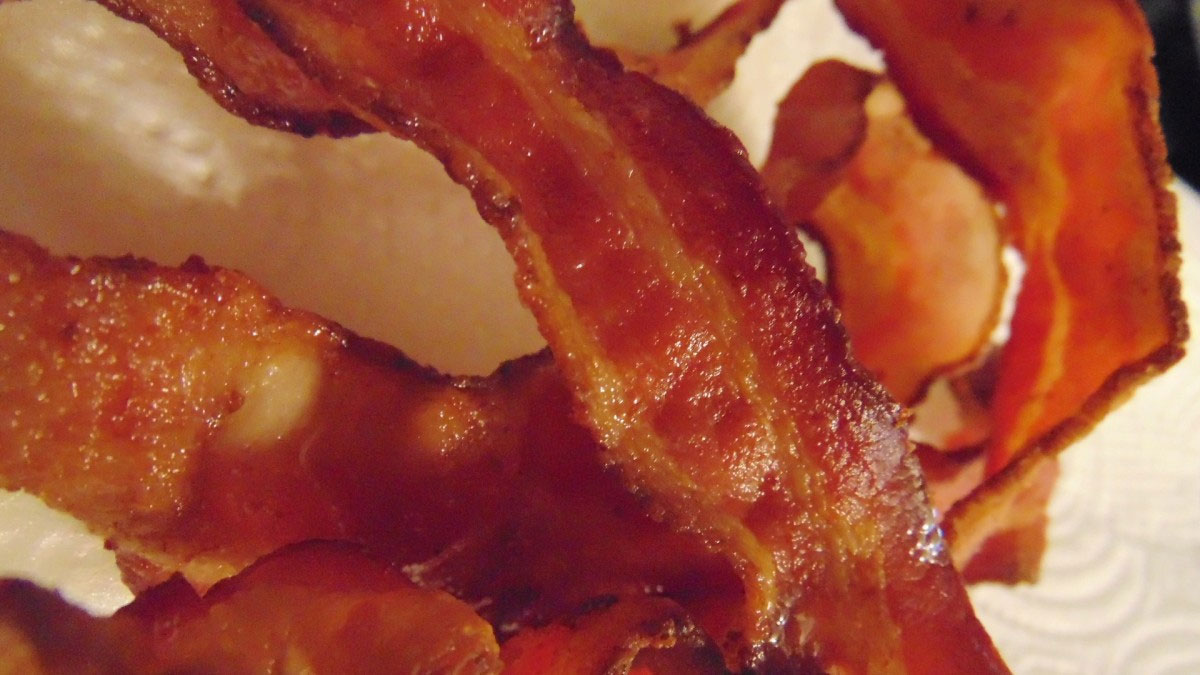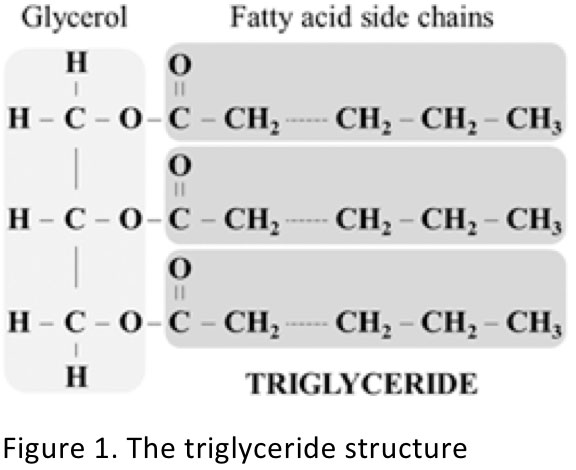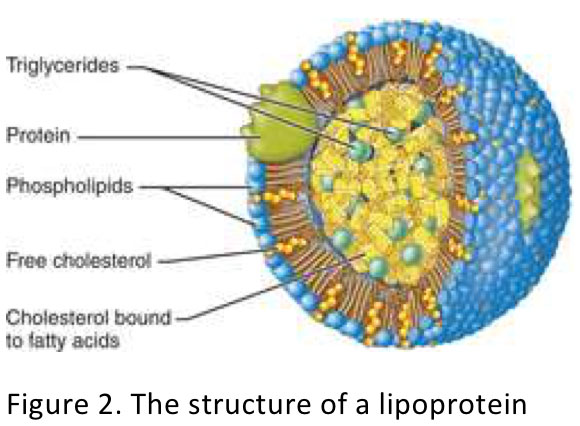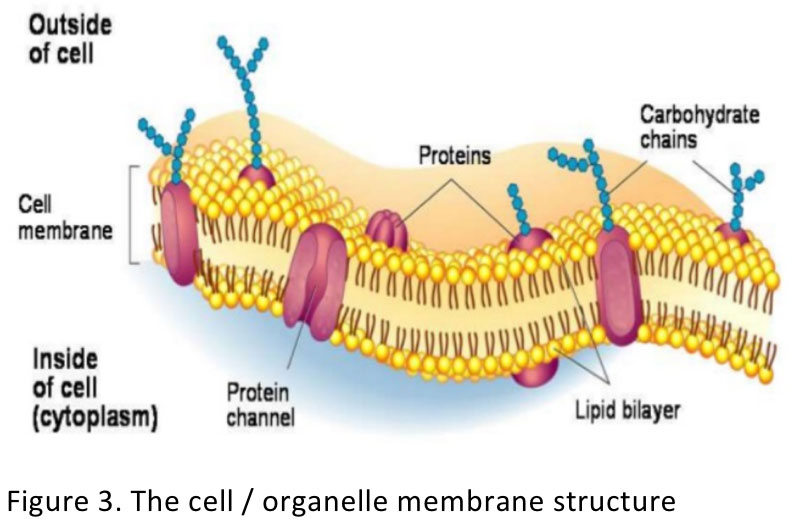
Hello,
In my previous blog I started a series of communications on macronutrients. We have already spoken about carbohydrates and what we can use them for, today, we are going to talk about another important macronutrient - lipids. I must say that for many people the word lipid is just a synonym of the word "fat", which is not perfectly accurate, so I would like to clarify this right away. In science and in medicine we usually talk about lipids, which are represented by a diverse group of chemical compounds. These chemicals include mainly fatty acids and their derivatives that are insoluble in water.
What are lipids?
Lipids can be classified into fatty acids, the simplest molecules, which can be combined with glycerol (a carbohydrate) to form triglycerides (see Figure 1). Lipids also include sterols, such as cholesterol, as well as lipid-soluble vitamins (A, D, E, K).

Today, we will focus on fatty acids and triglycerides, which are essentially fats, waxes and oils. The difference between these is that they contain different fatty acids and because of the different properties of these fatty acids, fats are solid at room temperature, whereas oils are liquid. This is a pure physical property and it depends on the composition of a specific triglyceride i.e. what fatty acids are attached to glycerol to form a triglyceride.
So, fatty acids are the simplest building block of fats and oils and as you can guess, they can be found in a variety of animal and plant-based products. There are quite a few of them depending on the number of carbon atoms included into their structure or their length. Two of them - linoleic and alpha-linoleic acids - are essential. It means that our bodies cannot produce them and we have to consume them with food. The rest of the fatty acids that we use in our body can be synthesized, so they are not essential. Our body can also break down triglycerides into glycerol and fatty acids as well as package and repackage them in order to store them, to transport them to another part of the body and to use them as an energy source.
What happens to fat when it's consumed?
When we digest fats or oils, they pass through our stomach into the small intestine. Our liver produces bile that helps to emulsify fats i.e. to break down chunks of fat into "digestible" droplets. Our pancreas produces lipase, an enzyme that helps breaking down fat and makes it ready for absorption. After absorption triglycerides and other lipids get into the bloodstream and then - to the liver in a form of little packages called chylomicrons. Liver takes them in, further breaks them down, repackages them into small globules called lipoproteins and sends these lipoproteins out into the bloodstream. The lipoproteins consist of a "signal" protein and a bunch of triglycerides, fatty acids and cholesterol neatly packaged into a microscopic globule (see Figure 2). The protein serves as an "anchor" or a "postal stamp" that our organs and tissues use to grab this lipid globule and to take it into the cell. In the cell the lipids are being used for multiple functions, mainly for energy. This is a slightly simplified description of this process, but I think it is sufficient for basic understanding of what's happening with lipids when we consume them. I will make a special blog on cholesterol and another one on more detailed description of the role of various types of lipoproteins (on "good" fat and "bad" fat). Now when we have a basic understanding of what happens to lipids in our body, I'd like to talk about their role in our metabolism.

So, what are the functions of fat?
First of all, we all know that we can use fatty acids for energy, they are very energy-dense and compact. We can get 9 kCal of energy from 1 g of fat, which is the highest energy yield among all macronutrients. The process of fat burning is called β-oxidation and during this process our body produces some intermediary molecules that we call ketones. These are mainly the following three molecules - acetone, acetoacetate and β-hydroxybutirate. They all are water-soluble and can easily dissolve in our blood and be delivered to all our organs and tissues to be used for energy. When we are on a low-carbohydrate diet, this process becomes very active and our bodies produce a lot of ketones that are identifiable in our blood and urine. We call it ketosis. Also, acetone is a highly volatile substance and we literally breathe it out - that's why people on a low-carb diet have a very peculiar scent. Another important thing to know is that our body preferentially uses carbohydrates as an energy source whenever they are available. Whenever we run out of carbohydrates our bodies start to use fat by activating the process of triglyceride breakdown and β-oxidation. This process takes time and certain organs, like our brain, need up to 2 weeks to switch to ketones from carbs. This process is called ketoadaptation and since it takes a while, many people notice that they feel weak and sluggish when they just start a low-carb diet (an "Atkins" flu). That's why we are not supposed to break the diet if we are going on an Atkins diet or any other low-carb diet.
Another important function of fat is structural. Adipose tissue creates cushions for some of our organs, such as kidneys for example, and it also serves as a great insulator. Another structural aspect of fatty acids is that they can be transformed into phospholipids, which in turn form our cell membrane (Figure 3). This function is critical for our survival, I would even call it the most important function of fat - every cell in our body has a cell membrane and a number of organelles such as nucleus, mitochondria, Golgi complex and others and their membranes are comprised mainly of phospholipids.

And finally, the last, but not the least function of fatty acids is signalling - our cells communicate using chemicals and many of them are created out of fatty acids. You must have heard of Omega-3 (ω-3) and Omega-6 (ω-6) fatty acids. Again, I wouldn't like to get too scientific here, but it's important to know that certain fatty acids (usually ω-3) can be transformed into signal molecules that reduce inflammation and some (usually ω-6) can be transformed into molecules promoting inflammation. There are lots of these molecules and the process is quite complex, but I want you to be aware of this, very basic, idea.
So, to sum it up, fats and oils are lipids that our bodies use as a great energy source, which is compact and dense and allows for storing a lot of energy for survival. Fat burning is happening through the process of creating ketones (ketosis) and it takes some time to adjust to it when we are on a diet (ketoadapataion). Some fatty acids are essential and thus we must consume them i.e. we cannot completely exclude fat from our diets. Fat also plays important structural role and, again, that is another reason why we should consume at least some fat. Lipid-soluble vitamins, A, D, E, K are also coming with fat and are essential for our survival.
These are the mere basics and I will definitely continue our conversation about lipids in my next blog - I'll be talking about cholesterol. Also, I will make a couple of blogs on some other important aspects of lipid metabolism - we will talk about "good" and "bad" fat/cholesterol and on regulation of lipid metabolism, which is essential for weight loss and achieving the optimal body fat percentage.
Sincerely Yours,
Dr.Sam
